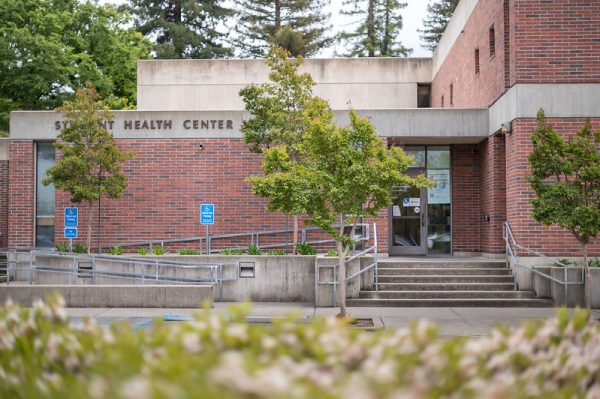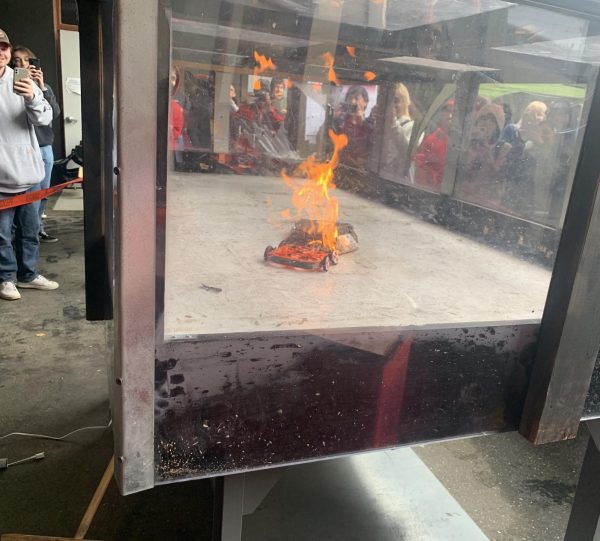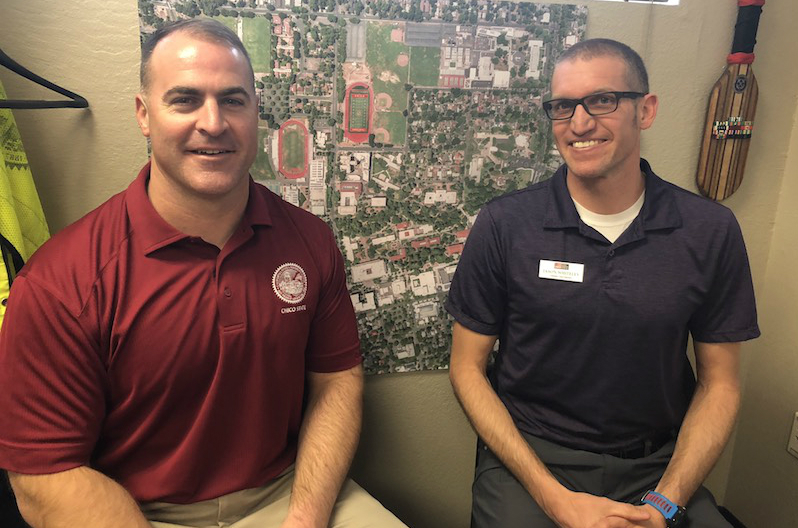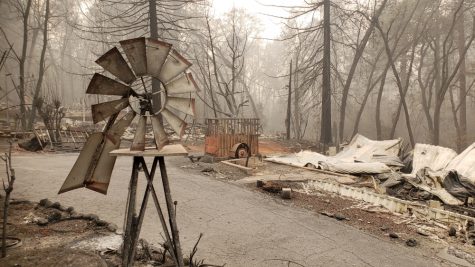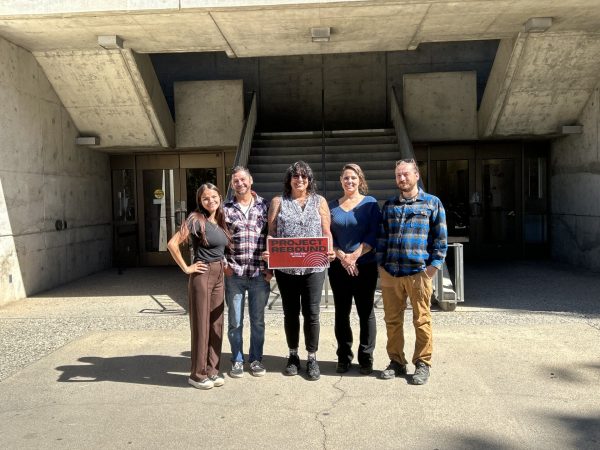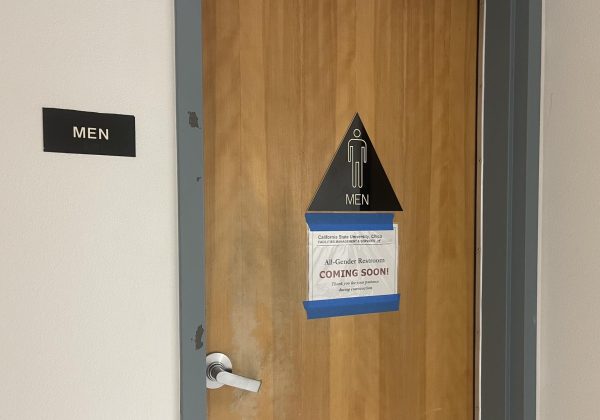Building project raises concerns over climate neutrality, campus transparency
Michael Guzzi and Jason Whiteley are lead consultants for information on the new Siskiyou Hall building project. Photo credit: Natalie Hanson
The science building behind Meriam Library, Siskiyou Hall, has a replacement three times its size coming soon. And after students recently expressed concerns about what this new building means for the campus’ future, as well as the university’s commitment to sustainability, administrators have begun responding.
Several campus administrators and employees who have been involved with the building’s design and planning process said they were taken aback by student responses to its announced natural gases energy plan. In response to students’ concerns Dean of the College of Natural Sciences David Hassenzahl stated that he hopes students will look for more information about the new building, referred to as Siskiyou II.
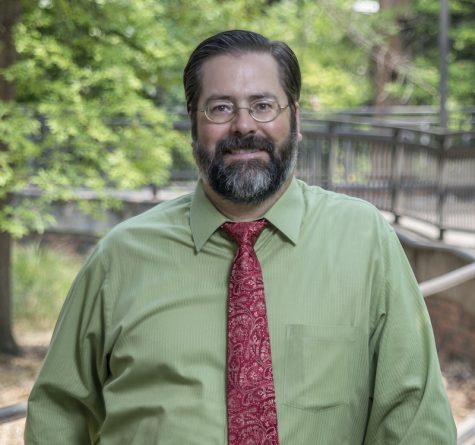
Siskiyou II’s energy plan, he said, will release natural gases “only some of the time.” This saves the university an estimated $20 million as opposed to using a plan with electricity, which he also stated would not ensure climate neutrality.
“It would not be carbon neutral to start with if it was electric,” Hassenzahl said. “We have such a small footprint … that we are doing a substantial reduction with this building alone.”
Hassenzahl said physical science department buildings in general are costly.
“They’re expensive, they have a high energy demand, require lots of equipment including ventilating hoods, and it’s hard to build them using low energy.”
“We have pushed as far as we could to get the footprint down to meet our teaching objectives with the smallest environmental footprint that we could do, consistent with our campus climate agreement,” Hassenzahl continued. “I’m really proud of this building from a sustainability perspective.”
He invited students to attend the town hall on Wednesday, March 14 from 12:15 p.m. until 1:15 p.m. in Kendall Hall 207-209.
An Economic Decision
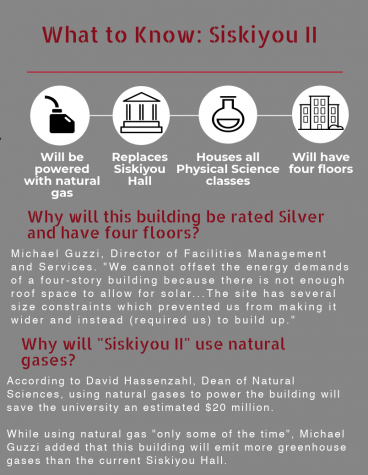
The decision to use natural gases for Siskiyou II, “was not entirely financial,” according to Michael Guzzi, the director of facilities management and services, and Jason M. Whiteley, the assistant chief engineer.
“One of the deciding factors was that an electric building required a lot more energy than natural gas because natural gas has so much power,” Whiteley said. “It wasn’t just a financial decision, there’s a lot of technology with electricity that’s very challenging. One of the requirements of this building (was) to have it available 24/7 to students. The other is there is a lot of lab hoods. All day long the hoods shove heat out (of laboratories), making it hard to keep the building warm, so the university (now) leans towards a more economical choice.”
Guzzi said he wanted to clarify that the building was never announced as being climate neutral. “We didn’t say ‘let’s go electric’ and then switch,” he said.
Guzzi also said that while this new building is more efficient than the current Siskiyou Hall building, Siskiyou II will produce more greenhouse gases than the one it is replacing. This is mainly due to the new building being three times the size of the current building. In addition, Siskiyou II will contain all classes from the Physical Sciences building.
“We’re making efforts to try to get to those plans for 2030, in the future,” Guzzi added. “We’re looking for ways to be more efficient every time we build, in the future.”
Campus Transparency
Hassenzahl also expressed his surprise that students attacked the transparency of the building’s planning process.
“One student commented we weren’t being transparent- that surprised me a bit, as we’ve had a number of meetings to attend,” he said. “From my perspective we’ve been very interactive with students.”
However, Geography and Planning Professor Mark Stemen said his students did not feel the invitation to these meetings was enough to express their views.
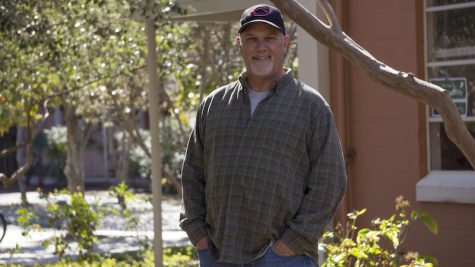
Stemen was the instructor of a group of students who recently campaigned to raise awareness of the university’s announced plan using gas. “I don’t think any of the students knew this was going up until they saw the university home page.”
“It’s not they were trying to hide it, but they weren’t being as open as they could be,” he said.
The fundamental thing, Stemen said, is that “students shouldn’t have to check up on administrators.”
“We shouldn’t have to tell them they’re not keeping their word,” he said.
Planning for the Future
Stemen said part of the problem with this new building is that planners are content with it being rated silver on the LEED (Leadership in Energy and Environmental Design) scale. The LEED certification scale is a point system categorizing buildings based on how green they are. The levels of LEED from least to most green are certified, bronze, silver, gold and platinum.
When asked what is preventing the building from achieving a platinum certification, Guzzi, who is accredited as an expert of this certification, said he could not provide an answer at that time.
Stemen said a silver rated building and continuing to use natural gas, both show that the university is focused on saving money in the name of meeting educational requirements. But that leads, he said, to a lack of focus on achieving climate neutrality and of recognizing the need for neutrality as imperative. “No, this (Climate Neutrality Commitment) is not an aspirational goal. My students think it’s life and death.”
Stemen also took issue with the general assessment that the building must use natural gases to meet educational requirements for science buildings. The addition of a fourth floor, he said, is part of the already high bill for the building, and a cost deemed necessary over what he considers a more progressive energy plan.
“(They say) that it will draw people here, it will do all these things (for the community)…I’d argue that if we had a climate neutral building it would draw even more,” Stemen said.
“I’ve heard the most important thing is meeting education requirements. But what I don’t hear is climate change,” he continued.
Based on the statements made by planners involved, Stemen said that this building will continue to produce greenhouse gases through 2050. Knowing this and that it will emit more than the current hall, he said it is clear that the university is not focused on fulfilling its commitment.
“It’s not just universities that need to give up fossil fuels, it’s everyone,” Stemen said. “We need to be the leader. We can do this. We’re that smart.”
Natalie Hanson can be reached at [email protected] or @NatalieH_Orion on Twitter.
